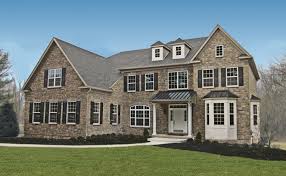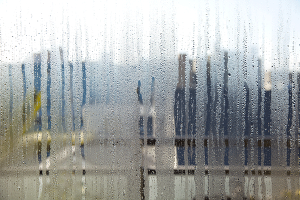PREVENTING MOLD GROWTH
There are steps you can take to minimize the chance of mold taking residence in your home or building. While mold spores are airborne and can land and settle far from where they originated, the best thing you can do to prevent mold growth is to eliminate excessive moisture. Clean up any leaks, spills or floods as soon as possible since mold begins to grow in as little as 48 hours. You should also keep indoor humidity levels low. The EPA recommends indoor relative humidity levels be kept between 35%-50%. High humidity levels indoors lead to mold, mildew, and high concentrations of biological microorganisms such as bacteria and dust mites, which can affect the health of occupants. EMS will evaluate your current situation and recommend the proper dehumidifier to install in an area with high relative humidity. Learn more about how high humidity levels encourage mold growth by visiting the Mold and Humidity page of our website.
It is important not only to treat and eliminate any mold in your home or building but to continue to keep moisture and humidity levels below 50% or your mold problem will appear again.
How to Control Moisture
There are many steps you can take to prevent mold growth from taking hold and causing harm to both your home and your family.
- Proper drainage is a critical first line of defense against moisture problems. Poor foundation drainage around the house is often the major source of exterior moisture getting into the house.
- The land around your building should be graded so that water flows away from the house
- Keep your roof in good repair by replacing any missing roof shingles
- Keep gutters and downspouts clear of debris that could block water flow. Water from downspouts should be directed away from the property
- Missing flashing around chimney and plumbing vent stacks may allow moisture into attics or walls
- Check around windows for damages and for water seeping as a result of rainfall
- If you have water leaking in through basement walls or floor during heavy rains, check any underground piping connected to downspouts. Broken pipes could allow water to seep into the soil and into your basement
- Keep dust to a minimum. Mold can grow on dust.
How to Prevent Condensation and Excessive Humidity 
- Install a dehumidifier in your basement or crawl space. Basements and crawl spaces often have high humidity levels
- Open widows or run ventilation fans in bathrooms when taking a shower. Fans should be vented to the outdoors not the attic
- Dryer vents should extend to the outside, not into the living space
- If you use a humidifier make sure it doesn’t increase humidity levels over 50%
- Install an attic vent if you don’t already have one
While you can’t eliminate all mold spores in your house or completely prevent them from entering, taking the above precautions will help prevent mold growth. If you live in Southeastern Pennsylvania and suspect mold growth within your property, contact Environmental Mold Solutions. We can evaluate your home, inside and outside, and help determine if any areas might be susceptible to water intrusion or elevated humidity levels which could be causing the mold growth.
Giving your home or building a thorough checkup to identify any issues that might contribute to mold growth is important. Correct any problems as soon as possible. If you’re not sure how to make the necessary repairs, hire a professional to assist you. Assessing your home will help protect the value of your home and keep your family from potentially suffering the health consequences of mold growth.
